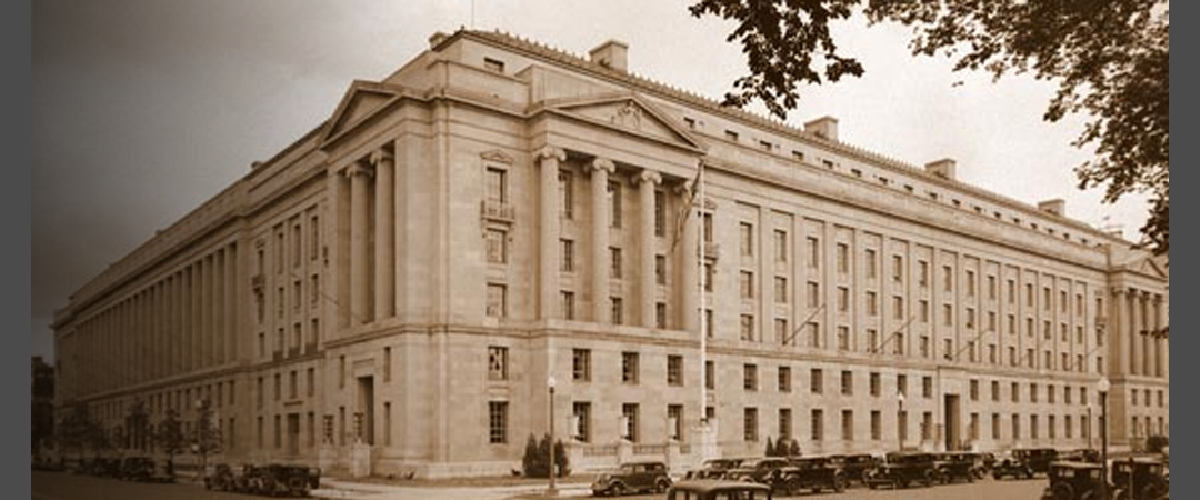Henry Highland Garnet and His Call for Resistance to Slavery in 1843

Henry Highland Garnet (1815-1882) was an abolitionist with a quick wit and satirical sense of humor. Born into slavery in Kent County, Md., Garnet moved to New York and freedom with his family when he was nine.
Garnet’s gift for speaking was evident from a young age. When he was 21 and studying at the Oneida Institute in Whitesboro, N.Y., he dealt cleverly with a disruptive incident. As he was taking part in a colloquy of the junior class, a student named Cills with pro-slavery views sat in the balcony with a large pumpkin. Here's the incident as told by James McCune Smith, a close friend of Garnet and also a student at Oneida Institute:
“At a favorable moment, he aimed [the pumpkin] at Garnet, throwing it with full force from the gallery. Missing its aim, it was dashed to pieces on the stage, many fragments flying in the faces of the ladies below. In the midst of the great excitement that followed, Garnet quietly stepped forward and looking gravely on some of the smashed pieces, quietly said, ‘My good friends, do not be alarmed. It is only a soft pumpkin. Some gentleman has thrown away his head, and lo! his brains are dashed out!’ From that day forward, Cills was called ‘Pumpkin Head.’”
Garnet finished his education by training to be a Presbyterian minister and in 1840 was called to be a pastor of the Liberty Street Presbyterian Church in Troy, N.Y. Three years later, he was ordained. He used his speaking talent in church and in his anti-abolition activism. On May 2, 1840, he addressed the American Anti-Slavery Society, asserting the rights of all Blacks, enslaved or free, to full citizenship rights.
In 1843, 27-year-old Garnet made his first address to the National Negro Convention in Buffalo, N.Y. Titled, “An Address to the Slaves of the United States,” it has become famous. In the text below, the quoted sections are direct from the speech. (The uppercase letters are in the quoted source.)
Rev. Garnet spoke from his status as a free Black man and a Presbyterian minister. He framed his words as a Christian, urging the enslaved to resist.
First he apologized to the enslaved people because the convention had addressed only the concerns of the free Blacks. Slavery, he said, was a “deep gulf” between them and the free. He recalled that the first enslaved people arrived 227 years ago, without their consent, not free to enjoy “this fruitful soil.” Their first dealings were with cruelty, avarice, and lust from the self-described Christian men. Nor did they arrive at a land of freedom.
“But they came with broken hearts, from their beloved native land, and were doomed to unrequited toil and deep degradation. Nor did the evil of their bondage end at their emancipation by death. Succeeding generations inherited their chains, and millions have come from eternity into time, and have returned again to the world of spirits, cursed and ruined by American slavery.”
He noted the “inconsistency of a people holding slaves, who had themselves ‘ferried o’er the wave’ for freedom’s sake.” He listed the voices that had failed to convince enslavers to end slavery: Humanity, Wisdom, the Christian cross, and Jehovah.
Then he reminded the listeners of what had been lost. “Nearly three millions of your fellow citizens are prohibited by law and public opinion (which in this country is stronger than law) from reading the Book of Life. Your intellect has been destroyed as much as possible, and every ray of light they have attempted to shut out from your minds. They are also ruined themselves as they have become weak, sensual, and rapacious. They have cursed you. They have cursed themselves. They have cursed the earth which they have trod.”
He advanced his moral argument: “In every man’s mind, the good seeds of liberty are planted, and he who brings his fellow down so low as to make him contented with a condition of slavery, commits the highest crime against God and man.”
He warned listeners of the enslavers’ goal: “They endeavor to make you as much like brutes as possible. When they have blinded the eyes of your mind, when they have embittered the sweet waters of life then, and not till then, has American slavery done its perfect work.”
Then he argued: “TO SUCH DEGREDATION, IT IS SINFUL IN THE EXTREME FOR YOU TO MAKE VOLUNTARY SUBMISSION. The divine commandments you are in duty bound to reverence and obey. If you do not obey them, you will surely meet with the displeasure of the Almighty.” Even though this is impossible with slavery, Garnet argued, “The forlorn condition in which you are placed does not destroy your moral obligation to God. You are not certain of heaven because you suffer yourselves to remain in a state of slavery, where you cannot obey the commandments of the Sovereign of the universe. If the ignorance of slavery is a passport to heaven, then it is a blessing, and no curse, and you should rather desire its perpetuity than its abolition. God will not receive slavery, nor ignorance, nor any other state of mind, for love and obedience to him. Your condition does not absolve you from your moral obligation. The diabolical injustice by which your liberties are cloven down, NEITHER GOD, NOR ANGELS, OR JUST MEN, COMMAND YOU TO SUFFER FOR A SINGLE MOMENT. THEREFORE IT IS YOUR SOLEMN AND IMPERATIVE DUTY TO USE EVERY MEANS, BOTH MORAL, INTELLECTUAL, AND PHYSICAL THAT PROMISES SUCCESS.“
And he recommended action: “Brethren, the time has come when you must act for yourselves. You can plead your own cause and do the work of emancipation better than any others.” He noted that the rest of the world was moving away from slavery though it was very much alive in the United States. “They buy and sell you as though you were brute beasts.” He urged them to look around and see the pain and torture of others. Then, he suggested, “go to your lordly enslavers and tell them plainly that you are determined to be free. Appeal to their sense of justice, and tell them that they have no more right to oppress you, than you have to enslave them. Entreat them to remove the grievous burdens which they have imposed upon you, and to remunerate you for your labor. Promise them renewed diligence in the cultivation of the soil, if they will render to you an equivalent for your services.”
“Inform them that all you desire is FREEDOM, and that nothing else will suffice. Do this and forever after cease to toil for the heartless tyrants, who give you no other reward but stripes and abuse. If they then commence the work of death, they, and not you, will be responsible for the consequences. You had better all die, die immediately, than live slaves and entail your wretchedness upon your posterity. If you would be free in this generation, here is your only hope. However much you and all of us may desire it, there is not much hope of redemption without the shedding of blood. If you must bleed, let it all come at once. Rather die freemen than live to be slaves.”
His most quoted phrases were: “Brethren, arise, arise! Strike for your lives and liberties. Now is the day and the hour. Let every slave throughout the land do this, and the days of slavery are numbered. You cannot be more oppressed than you have been. You cannot suffer greater cruelties than you have already. Rather die free men than live to be slaves. REMEMBER THAT YOU ARE FOUR MILLIONS!”
“Let your motto be resistance! resistance! RESISTANCE! No oppressed people have ever secured their liberty without resistance. Trust in the living God. Labor for the peace of the human race, and remember that you are FOUR MILLIONS.”
Garnet’s speech failed by a single vote to be endorsed by the Convention. Frederick Douglass did not vote for it because he recoiled at the idea of violence. Later, he agreed with Garnet.
The violence Garnet mentioned in his address was the initial violence the enslaved people endured, from their capture in Africa to the conditions of slavery in America, passed down to their descendants.
I think that Garnet urged peaceful resistance. He never suggested killing or doing violence to the enslavers. Rather, he addressed the issue of the violence the enslaved would likely receive had they the courage to speak peacefully to their enslavers as he urged, and the punishment of death they were likely to receive if they insisted in their labor strike.
He reminded them that it is “sinful to submit voluntarily to slavery.” He posed a choice between moral resistance and likely dying for it against voluntary submission and living with cruel abuse and violence from the enslavers.
Garnet has often been subject to criticisms of his approval of violence, but I find those claims questionable.
Jeanette E. Sherbondy is a retired anthropology professor from Washington College and has lived here since 1986. In retirement she has been active with the Kent County Historical Society and Sumner Hall, one of the organizers of Legacy Day, and helped get highway /historical markers recognizing Henry Highland Garnet. She published an article on her ethnohistorical research of the free Black village, Morgnec.
Common Sense for the Eastern Shore







